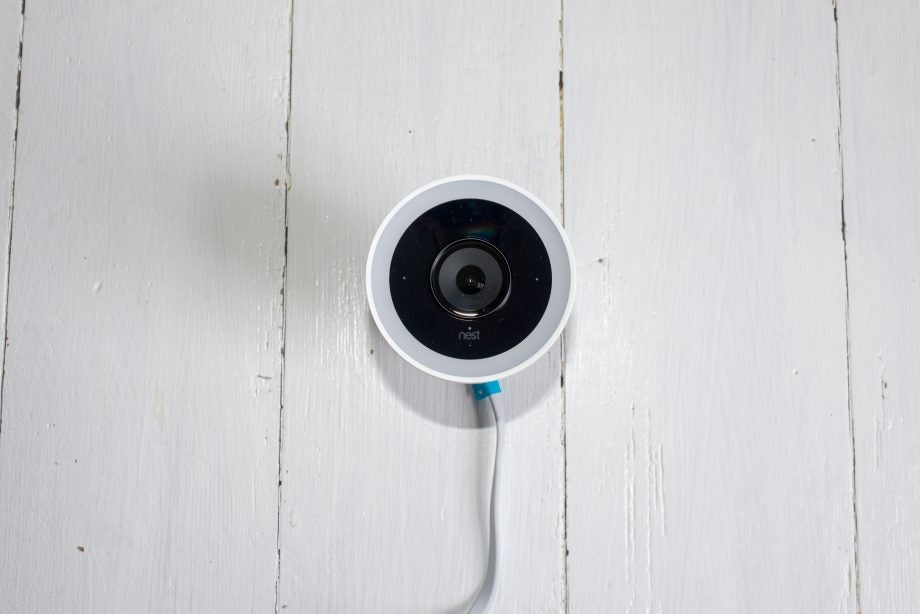EZViz C4W Review
EZViz C4W Review
An indoor/outdoor camera with a very flexible mount

Verdict
With its robust body that's easy to angle where you want it, the EZViz C4W makes it easy to get the coverage that you want. Its 1080p image sensor provides decent image quality in the day and night, and it's nice to see the option for offline SD card storage. Comparatively high cloud storage prices combined with a very fiddly app that makes it hard to get at the main options takes the shine off somewhat.
Pros
- Flexible mount
- Dual power options
- Reliable image quality
Cons
- Only Ethernet has a weatherproof connector
- Fiddly app
- Cloud storage is comparatively expensive
Key Specifications
- Review Price: £99.99
- Outdoor security camera
- 95 x 105 x 105mm
- 1080p video resolution
- 118-degrees field of view
- Cloud and microSD storage
- IR night vision
- Mains powered
With its domed body, the EZViz C4W is an indoor/outdoor security camera that’s been built to be easy to place and point.
It’s rugged, well built and has excellent image quality. Slightly fiddly installation and a rather feature-free app do detract from what could have been a better product, though.
Design and installation
- Easy to tilt up and down, so you can cover the area you want
- Can be fiddly to install, particularly if you want a waterproof option
The EZViz C4W is fitted into a secure, weatherproof dome box, which gives you rotation and up/down adjustment of the main camera. It’s fitted to a mounting plate, which can be attached to a wall or ceiling, either inside or out.
With the range of movement available to the camera, it’s easy to position it where you want the lens to point. And, as the camera can’t easily be removed, you get a secure connection that makes it hard for the EZViz C4W to be knocked off alignment.

There are two power cables coming from the camera. The first is a regular power input, with a lengthy extension cable provided in the box, running to the supplied power supply.
The second is an Ethernet input, which can provide data but not power.
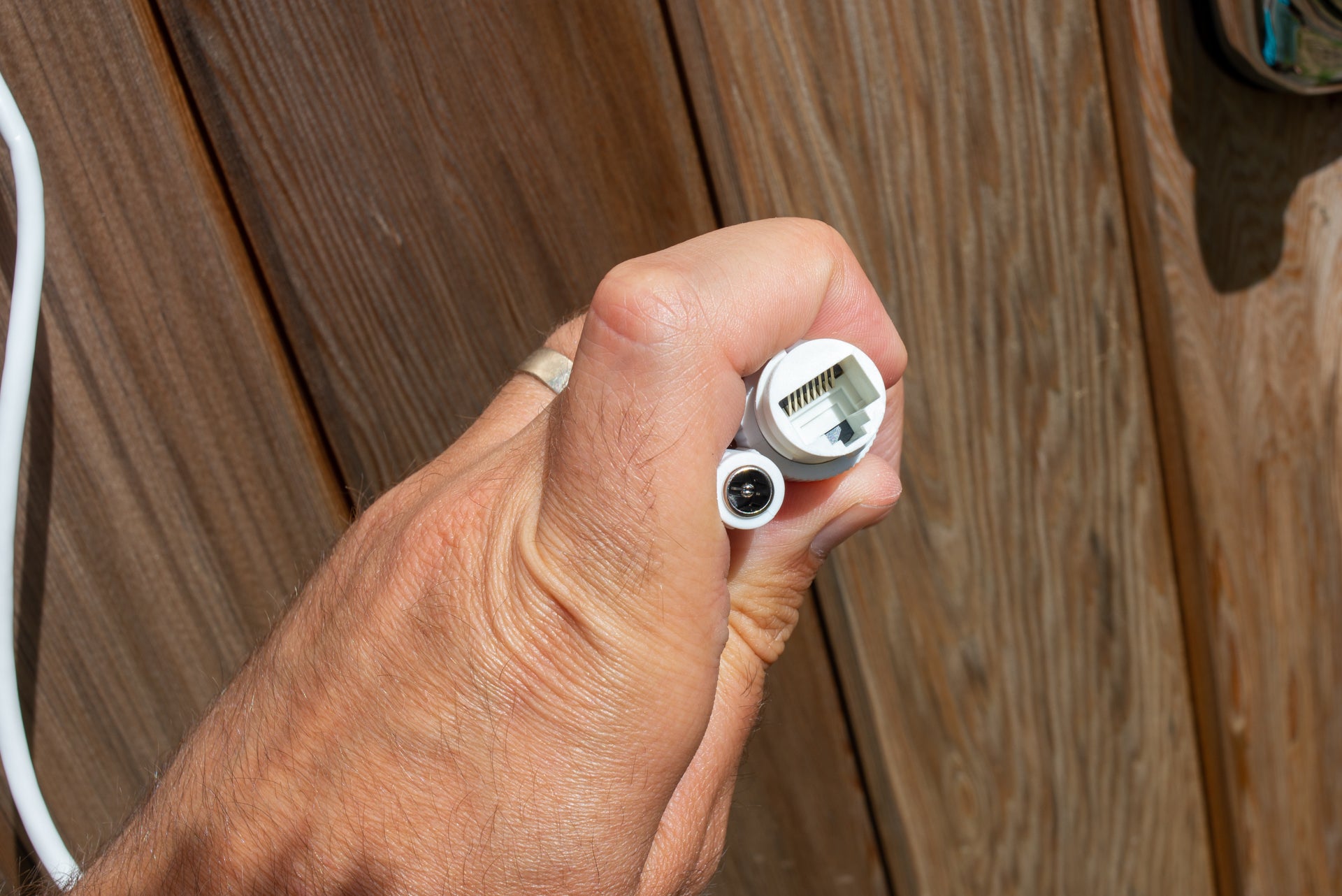
You can run the power cables through the back of the mount, straight into your home if you want to drill a hole. If you can’t do this and have to run the cables externally, EZViz provides a weatherproof connector for the Ethernet connection only. This is a real pain, as other external cameras that I’ve reviewed have all come with suitable instructions and kit for the provided power supply.
As well as Ethernet, the C4W has integrated 2.4GHz Wi-Fi, so you can run it without cables if you prefer.
Features
- Slightly fiddly app that makes getting to some features hard
- Some options are hidden depending on the mode that the camera is in
- There’s SD card recording for offline footage
Once the C4W is installed, it’s controlled through the EZViz app, which is one of the most fiddly and hard-to-understand that I’ve ever used. When you first launch it, you get a thumbnail view of your camera that you can tap to view the live feed.
Depending on how you’ve installed the camera, you may find that the image is upside down. There’s an option in the Setting menu to flip the image, but there’s no preview to show you which way round the video footage is.
From here, you can use the two-way speak option to have a clear conversation with anyone that you can see on the feed; you can take a snapshot or record a video; and you can set off the camera alarm, which plays a rather quiet siren noise through the camera’s speaker.

At this point, there’s no motion detection notification. To change this manually, the easiest way is to go back to the main home screen and select Leaving-Home Mode to set the camera to notify you of motion; when you don’t want alerts, you select At-Home Mode. Sadly, the app gives you no feedback, so you can’t tell by looking which mode you’re in, which is a huge oversight.
You can also turn on Alarm Notification mode in the settings, which toggles alerts on and off. It’s probably easier to use the schedule option to have the camera automatically change notification mode.
By default, the camera uses its entire field of view to detect motion. If you want to focus on an area, you can select the bits of the picture you want to monitor. Well, you can do if the Alarm Notification mode is turned on, either in the Settings menu or by using the Leaving-Home Mode; if you don’t, then Motion Detection Area option doesn’t appear in the app. It took me a good 30 minutes of head-scratching, Googling and manual reading to work out where this option was.
Activity zones are basic but they do let you cut out areas that would trigger a lot of alerts, cutting down on the notifications you get. You can also set a schedule for notifications, choosing times when you do and don’t want to receive them.
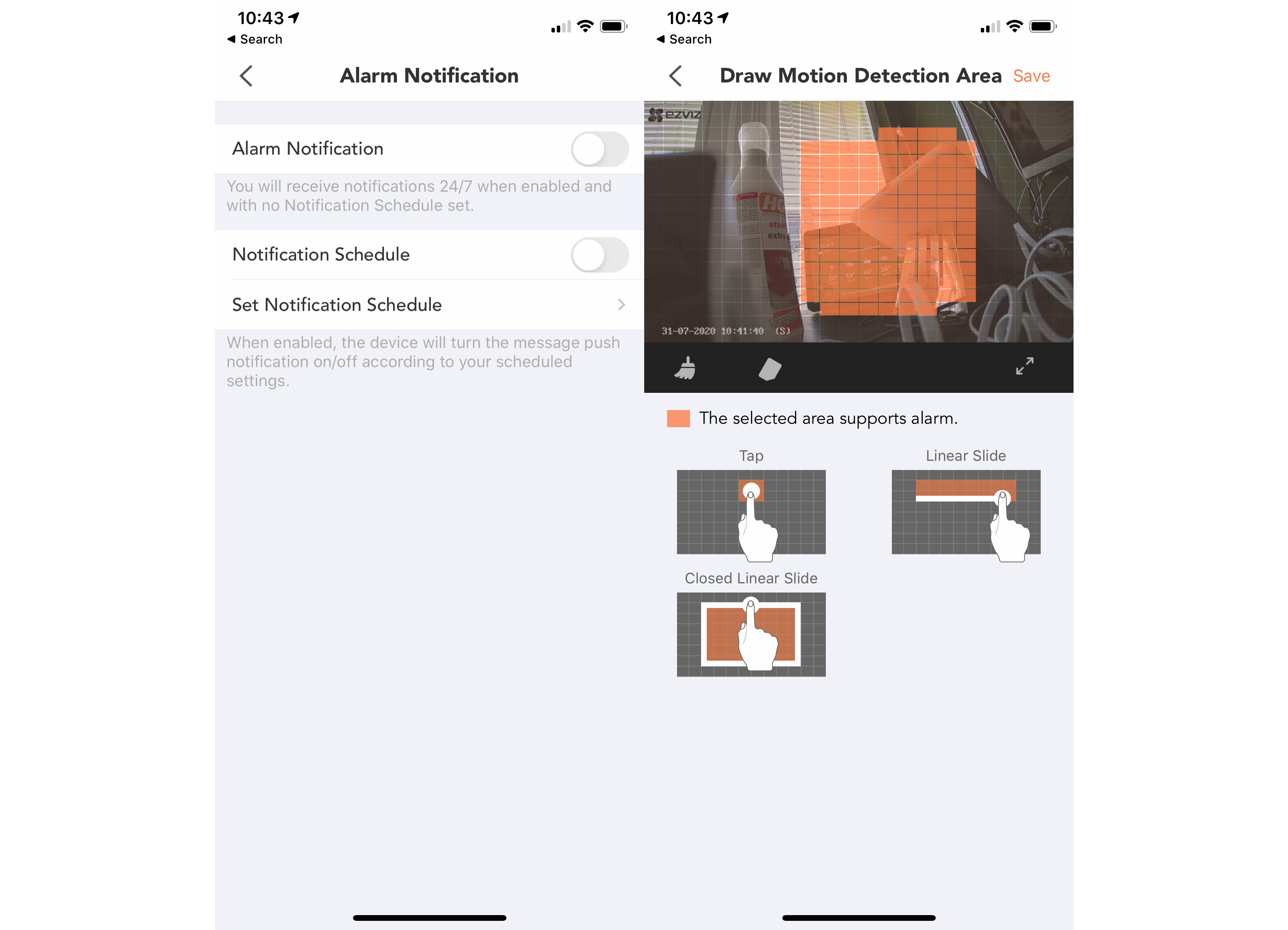
As well as notifying you, you can have the EZViz C4W play a custom sound when motion is detected, recording your own voice. I can see where this might be useful, say warning someone away from a bike shed, but you need to be careful where you place the camera and how often is picks up motion: you don’t want to annoy neighbours by constantly having your camera shout out a warning.
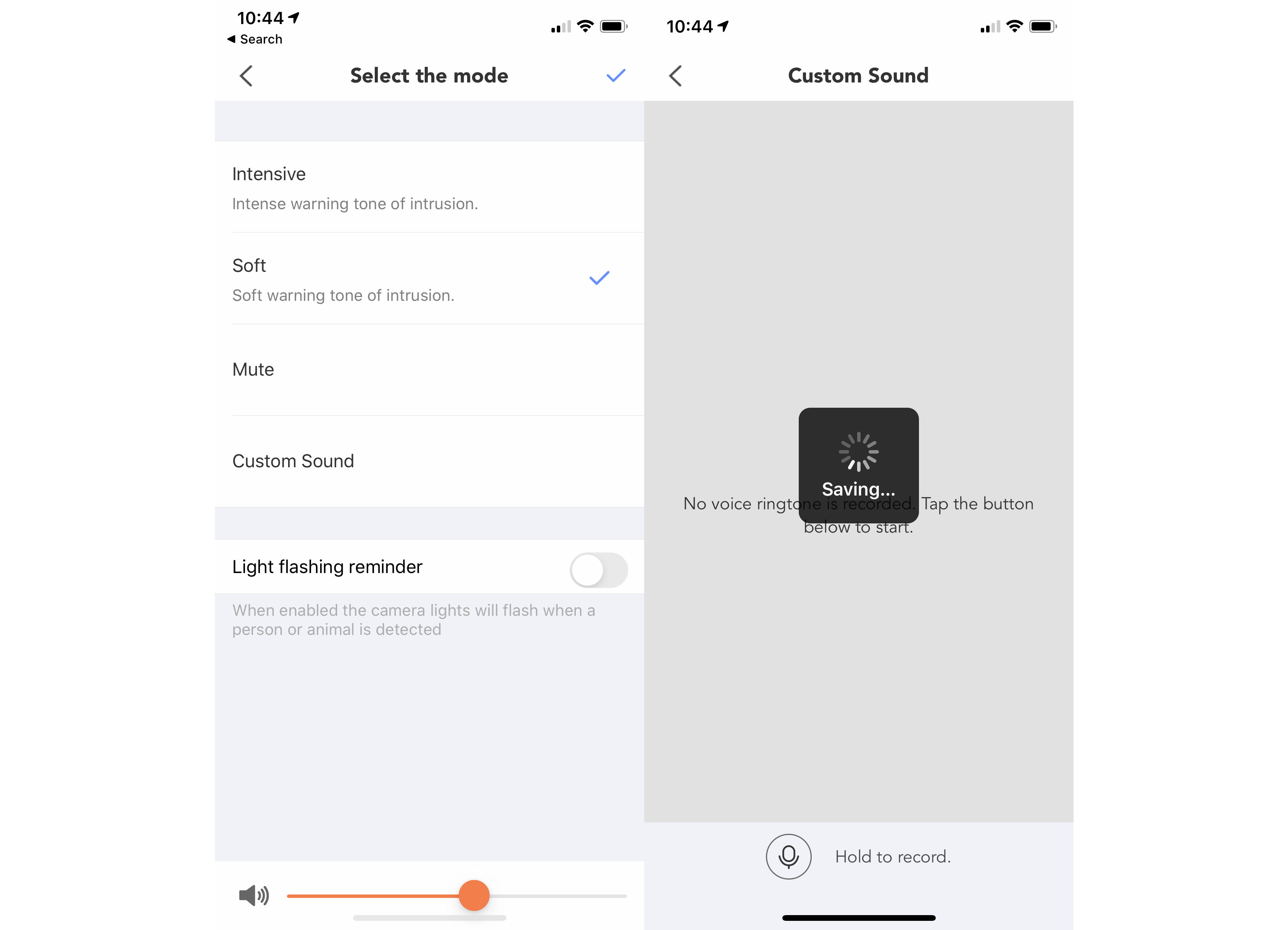
Video can be recorded to an SD card (not provided) that fits into the screw-down hatch in the underside of the camera, or to the cloud. Cloud plans are fairly expensive at £4.99 a month (£49.99 a year) for seven-day history for one camera; plans for four cameras are £7.49 a month (£74.99 a year). Nest is cheaper at £5 a month for 30-day history for unlimited cameras, and Ring is £8 a month for all of your cameras with 30-day history plus some additional features for the Ring Alarm.
All footage can be viewed in the app, with neat thumbnails making it quick and easy to find the clip that you want. All clips can be downloaded and saved to your phone if you want to preserve evidence.
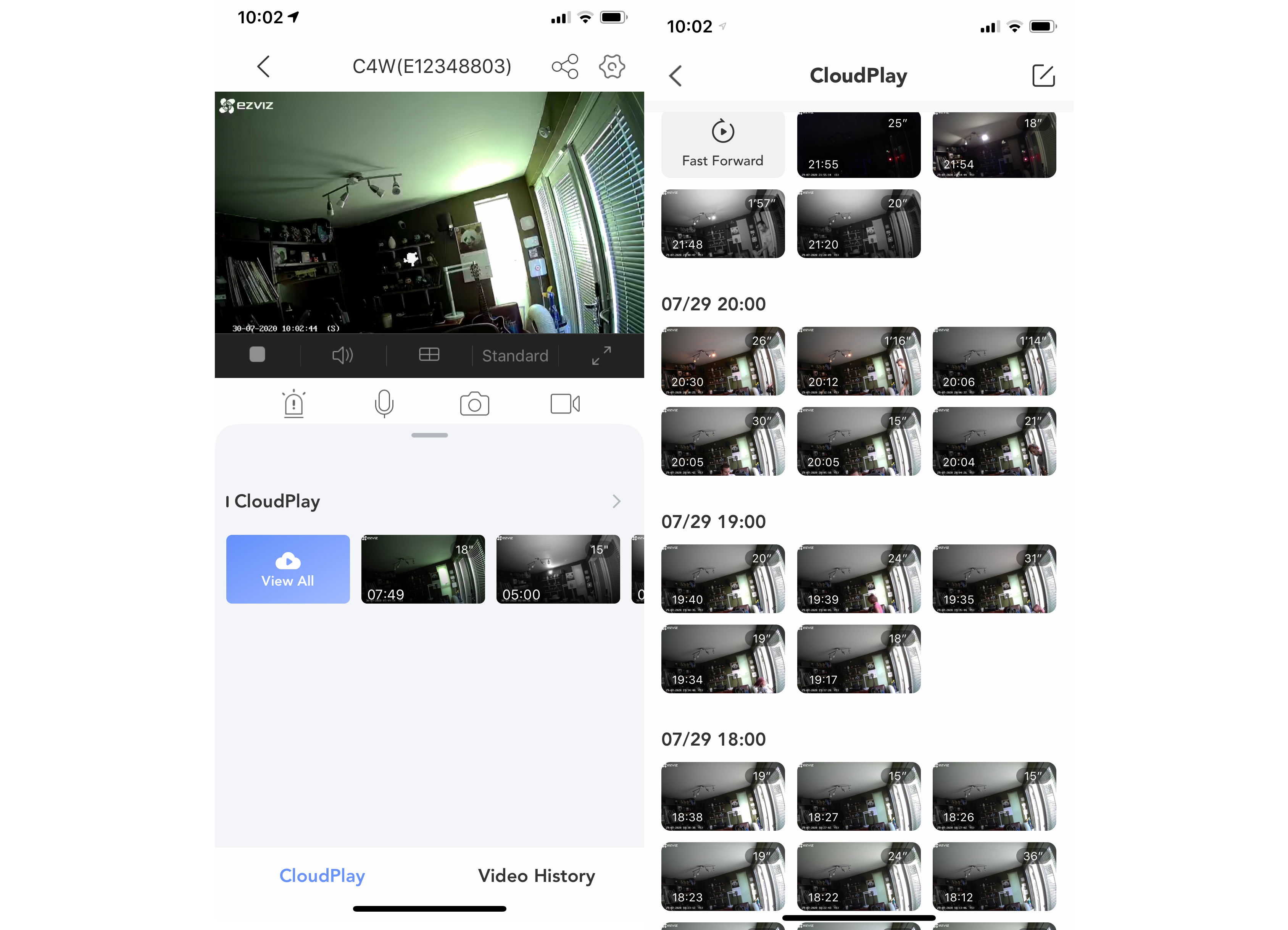
Video quality
- Overall decent image quality, although the video does get softer into the background
- Nigth vision is good, although the picture is quite soft
Video quality is generally very good thanks to the 1080p video sensor. There’s a 118-degree lens on the front, which captures most of a room, if used inside, but you get a slightly narrower field of view outside than on competing cameras.
Using during the day, the footage is well exposed, and objects close to the lens are sharp and detailed, so you can see details and spot an individual easily. As you move into the background, the picture becomes soft, and the camera let some details slip into shadow, which was a shame.

At night, the camera has to switch to black and white using its IR LEDs to light up the night. The picture is softer overall, but close-up you can still spot individuals easily enough. As you move into the background, the image gets noticeably softer and you lose some details to shadow.
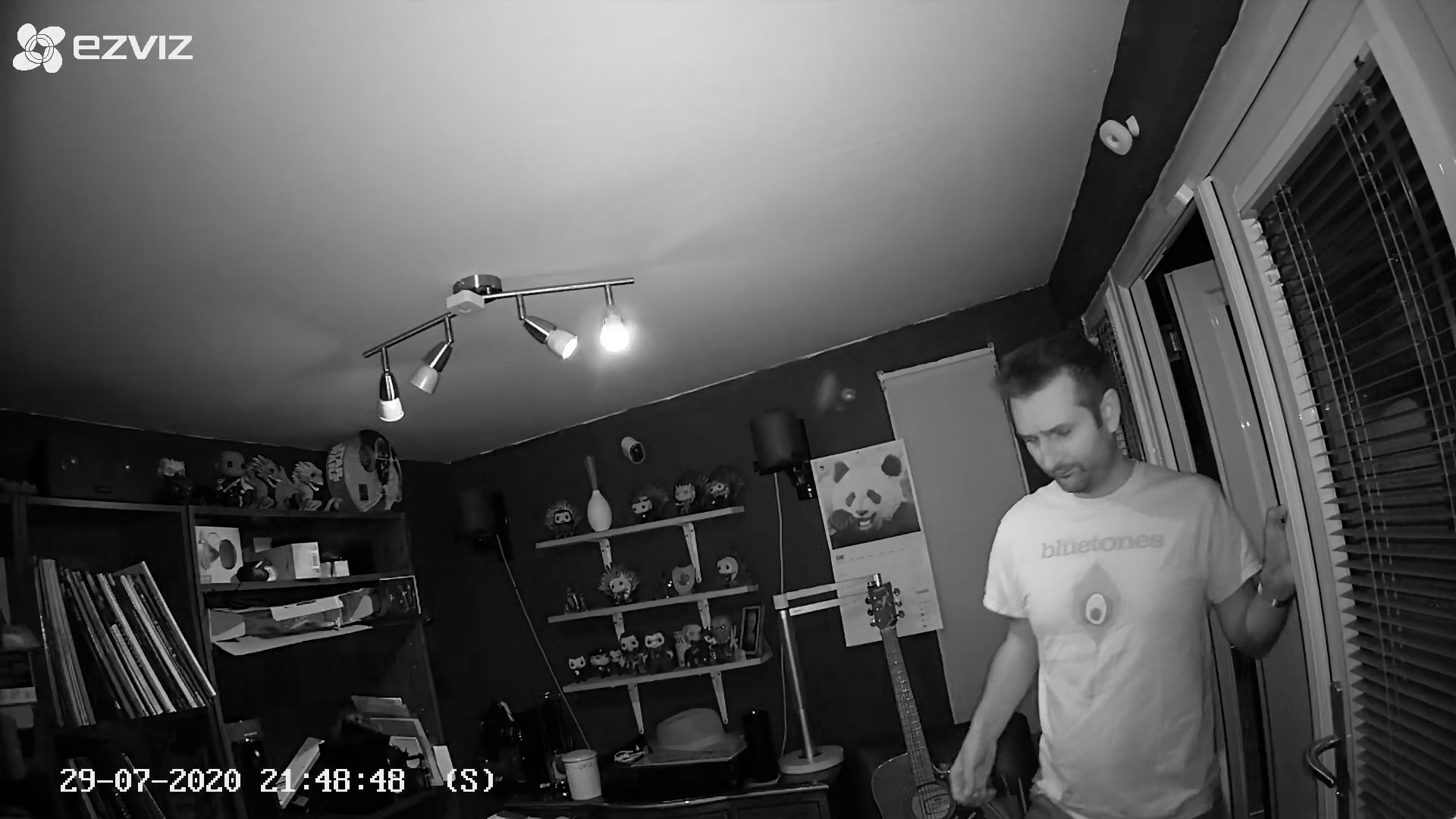
Overall, image quality is acceptable and clear enough to show what was going on but I’ve seen far better results from other cameras.
You should buy it if…
- You want a cheap outdoor camera
This budget model is a lot cheaper than most of the main competition.
- You want a wired camera
There’s an Ethernet connection, which is quite rare to find. It’s a useful option if you’ve got a poor Wi-Fi connection.
- You don’t want to pay for cloud storage
There’s an SD card in this camera, so you can save footage straight to the camera and avoid having to pay for a monthly subscription.
You should not buy it if…
- You want the best image quality
Image quality is alright, but a little soft; there are sharper cameras to choose.
- You want a camera that’s easy to install
There’s only weatherproofing for the Ethernet connection, not the power supply, which can make installing this camera outside hard.
- You want an intuitive app
Features aren’t always easy to find and you can find yourself hunting around the settings menus to get to the options you want.
FAQs
You do not, as you can add an SD card for local recording. Cloud recording is available as a paid-for extra.
There’s an Ethernet connection available, but the camera does not support PoE.



